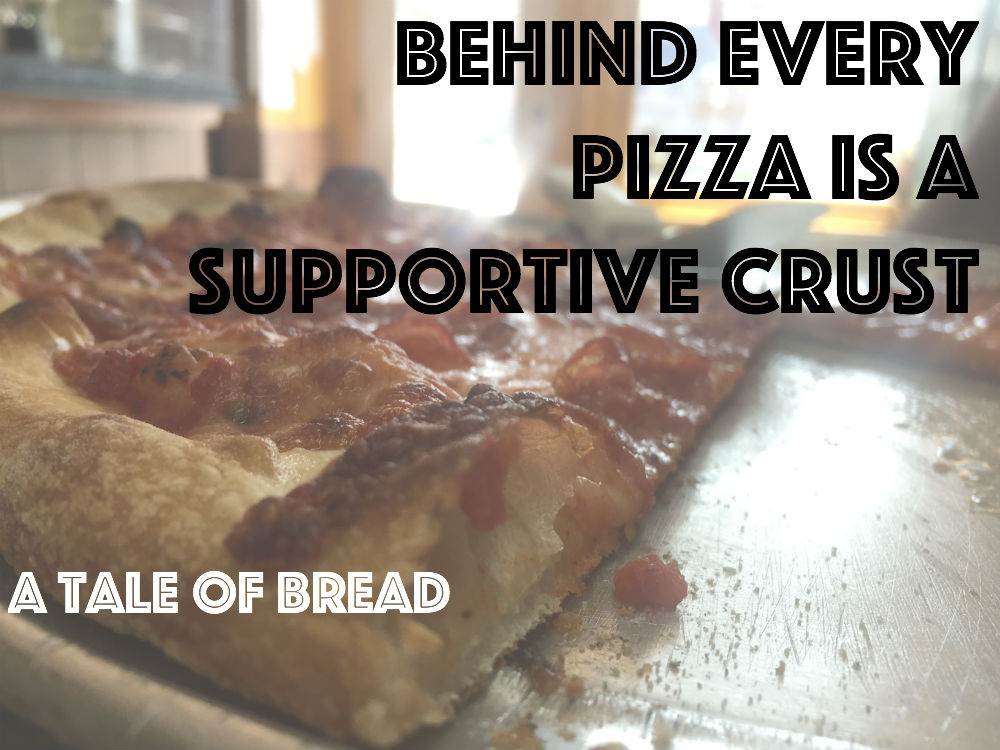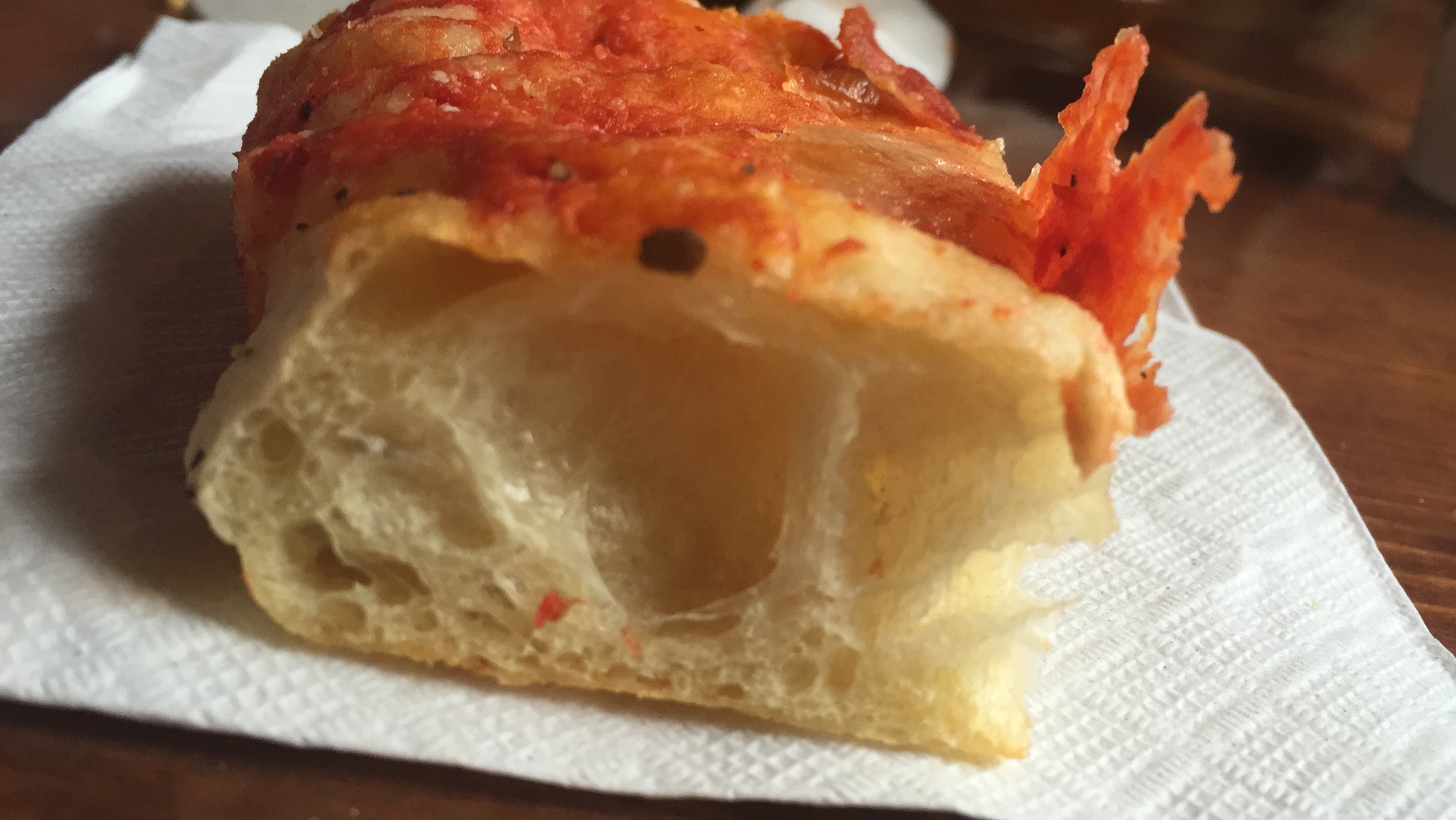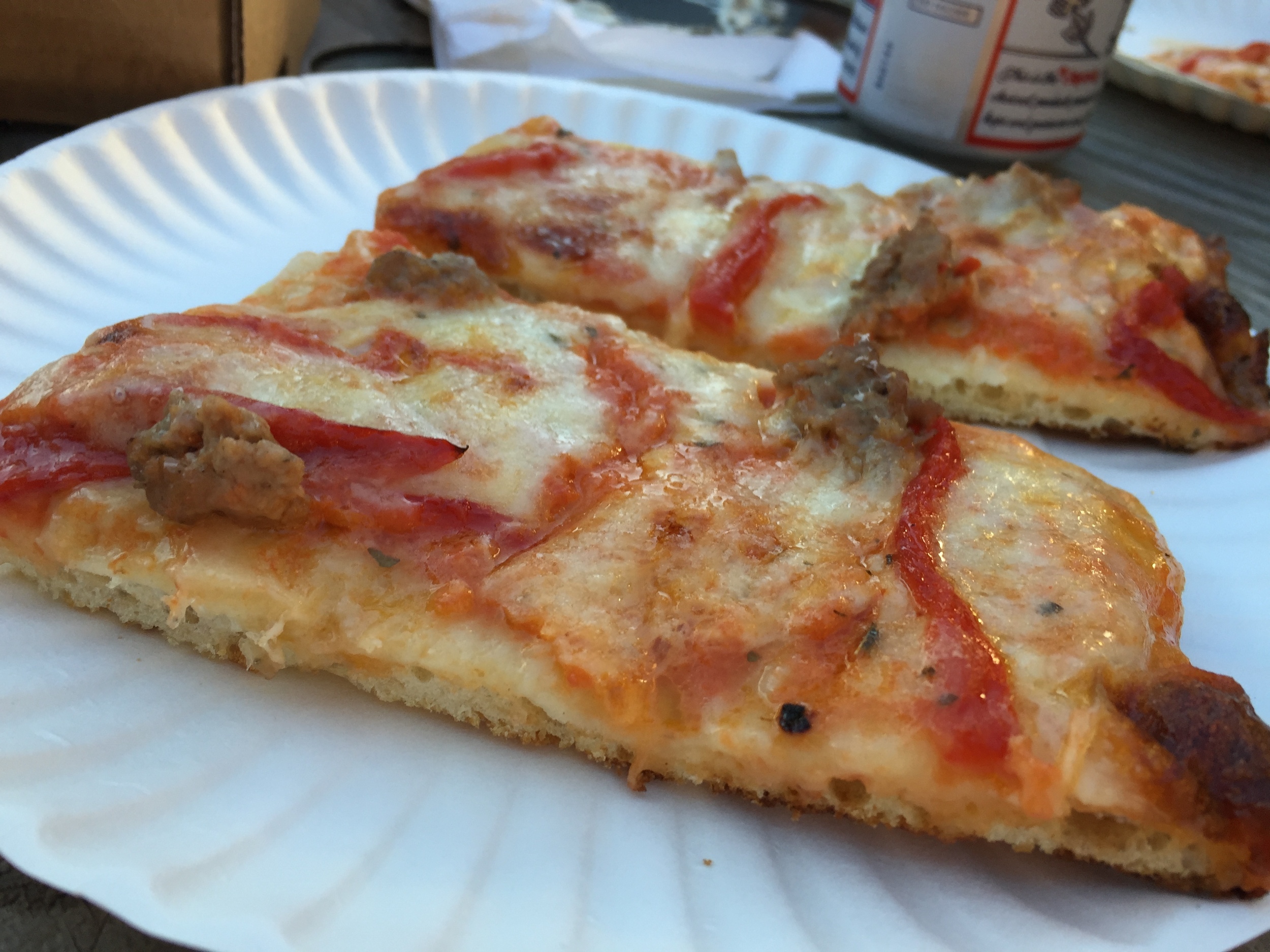Behind Every Delicious Pizza is a Supportive Crust
Bread by itself is deceptive. If you bring a quality loaf to a friend’s house they’ll say thanks, kiss you on the cheek, and that’s that. Maybe later after a few bottles of wine a guest will ask where you got the bread. What bakery? Where is it located? How much? Wow really, those are some fun facts. Forgotten as soon as the hangover kicks in.
Once you add sauce and cheese onto that bread people won’t feign interest. They’ll react like you just birthed this pizza from your well-kept womb. It’s always a surprise, a pleasant one, that is met with cheering and excitement that can make or break a party. There’s a reason the crowd gathers around that steaming box. People can’t wait to waft in the scent, admire the placement of the cheese, and make judgement calls about the toppings. People act funny around pizza, as if it was some horror manipulating humans from a Lovecraft story.
One day in history bread + cheese + salt will cause a great war if it hasn’t already. It inspires gusto and aggressiveness and if you happen to try and figure out who has the best pizza there’s no doubt that you can round up a pizza militia faster than General Washington and Lafayette at the Battle of Yorktown.
During these arguments the opponents will get to talking about the dough. They’ll say, “Well, their dough is too sweet. Too much sugar in their crust.”
Or
“Their dough is too flimsy to support the cheese and sauce.”
Or
“It’s just too crispy and crackery. It shatters the moment it touches my teeth! I have to get a dustpan out just to clean up after myself.”
Truly, pizza is nothing without a foundation of bread. Without the bread base you’re working with sauce and cheese. At best it’s a french onion soup knockoff.
Two of the newest and exciting pizza places in Pittsburgh both got their start with bread. Their goal was to make a solid sourdough loaf. But, from there they achieved greatness.
A slice of Tony Giaramita's Pizza al Taglio from when he was bringing pizza to Espresso a Mano.
First is Driftwood Oven pizza - to truly understand the pizza you’re getting you have to come to terms with their roots. They didn’t set out to make pizza.
Nope. Pizza was sort of an afterthought. Kind of like penicillin, velcro, x-rays and super glue. This wasn’t a “mad scientist” situation, it’s just Neil - the studious and scientific baker - wanted to make bread. In according to Neil, “You’re trying to do the same thing with the pizza [make something perfect]. With bread you don’t get to touch it, you put it in the oven and it’s done. You hope everything is perfect. But it’s not hands on and fun like wood fired pizza.”
And when you make bread there are repercussions. In order:
Bare, lonely bread is depressing. A melancholy loaf can sit in your pantry giving off an aura of wheat, its grainy body decaying rapidly. As it hardens day by day and molds from the inside out you’re reminded just how short and moldy your life is. It’s no good.
You can butter that bread. Slice it open, add some butter. It’s smooth creamy and full of cholesterol that bounces down your esophagus and funs up your intestines.
Butter is just the beginning - why not start packing ingredients atop the bread to create something more. Bread is the universal bonding agent of food. Food chemists worship it and if there was a food periodic table you can bet bread would be the keystone keeping things from falling apart.
When bread is used as a foundation it becomes a conduit to get food into your mouth. Make it a whole meal by combining a vegetable (sauce), dairy (cheese) and some protein (sausage). Bread gives these elements an ecosystem to co-exist together. Without bread it’s just a mess in your kitchen sink. It’s nothing. It’s a sad college meal you force yourself to eat at 4am because maybe this is the silver bullet that destroys your hangover.
Bread is vital to pizza.
Bread & Salt's Margherita pizza. Look at that bubble structure!
So - a bread guy makes pizza...why?
When you make bread you have simply made a loaf of bread. Nice. No one is going to complain about that.
But pizza is different. It’s a living entity that you are constantly tampering with. It’s a constant challenge. Bread is awesome. But bread is a pamphlet for a high school bake sale sitting next to a choose your own adventure set in a future where pizza is currency. Which would you rather spend your life reading?
Challenging your skills, overcoming barriers and pushing yourself to the next echelon is what growth is all about. And if you chart the growth of Driftwood Oven over the past year, you’ll see they’re on an explosive path.
In the heart of Bloomfield we have Bread & Salt - a bakery that promises simple, basic foods born from the combination of bread and salt. It’s simple stuff. But from the seeds of simplicity they have grown a magnificent mix of complex flavors. They’ve built a pizza with a bread-first focus and the results are stunning.
Bread & Salt has flipped the Pittsburgh Pizza Script. Rick Easton has set up shop, backed by years of bread experience.
Their sauce is simple, I had a piece with a basic basil leaf. And the cheese was delicious gloopy cheese. Anyone has access to these ingredients. I can go to the Strip or restaurant depot or my backyard for basil. I can find mozzarellas from various parts of Italy around Pittsburgh. The one thing I don’t have access to is Bread & Salt’s bread.
Luckily, I live three blocks from Bread & Salt so it’s not a huge issue for me. But for you? Gosh, better buy a nearby row house before the Bread & Salt real estate effect starts rippling out from Pearl St.
Next time you bite into a slice of pizza, think of the crust. Take a look at the cross section of the pizza and admire its structure. Notice how when you bend the pizza the crust cracks, but doesn’t break. Like it’s winking at you, telling you that it has your back.
Notice the bubbles in the crust and how they support the pizza from stem to stern.
Every great pizza has a great crust. Next time you see a pizza take a moment to admire the bread supporting your toppings.












